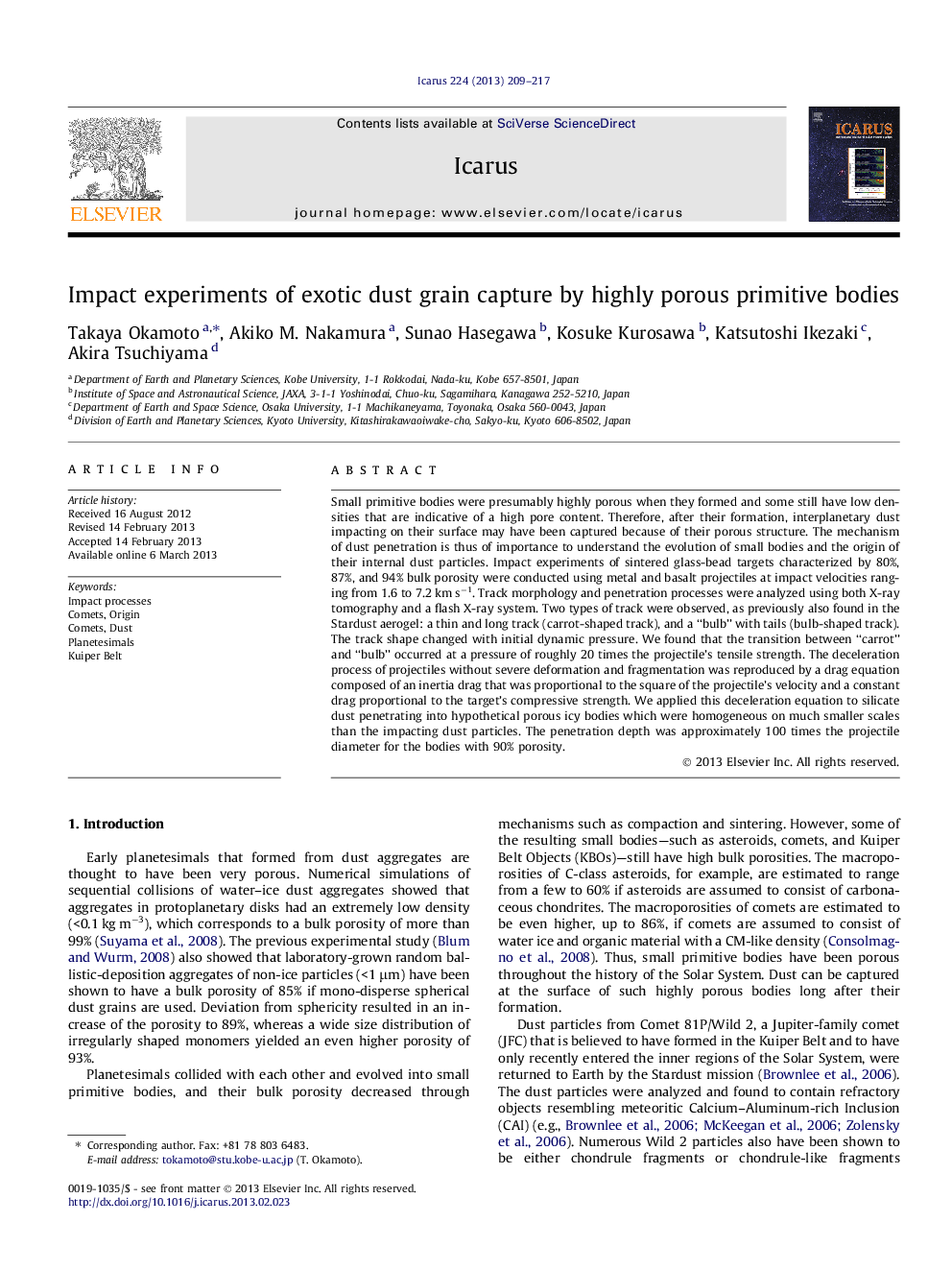| کد مقاله | کد نشریه | سال انتشار | مقاله انگلیسی | نسخه تمام متن |
|---|---|---|---|---|
| 1773542 | 1021137 | 2013 | 9 صفحه PDF | دانلود رایگان |

Small primitive bodies were presumably highly porous when they formed and some still have low densities that are indicative of a high pore content. Therefore, after their formation, interplanetary dust impacting on their surface may have been captured because of their porous structure. The mechanism of dust penetration is thus of importance to understand the evolution of small bodies and the origin of their internal dust particles. Impact experiments of sintered glass-bead targets characterized by 80%, 87%, and 94% bulk porosity were conducted using metal and basalt projectiles at impact velocities ranging from 1.6 to 7.2 km s−1. Track morphology and penetration processes were analyzed using both X-ray tomography and a flash X-ray system. Two types of track were observed, as previously also found in the Stardust aerogel: a thin and long track (carrot-shaped track), and a “bulb” with tails (bulb-shaped track). The track shape changed with initial dynamic pressure. We found that the transition between “carrot” and “bulb” occurred at a pressure of roughly 20 times the projectile’s tensile strength. The deceleration process of projectiles without severe deformation and fragmentation was reproduced by a drag equation composed of an inertia drag that was proportional to the square of the projectile’s velocity and a constant drag proportional to the target’s compressive strength. We applied this deceleration equation to silicate dust penetrating into hypothetical porous icy bodies which were homogeneous on much smaller scales than the impacting dust particles. The penetration depth was approximately 100 times the projectile diameter for the bodies with 90% porosity.
► Deceleration of projectiles in high porosity targets was studied.
► Two types of tracks were observed as those of Stardust aerogel.
► The track types depend on degree of projectile’s disruption.
► A penetration model with disruption condition of projectile reproduced the result.
Journal: Icarus - Volume 224, Issue 1, May 2013, Pages 209–217